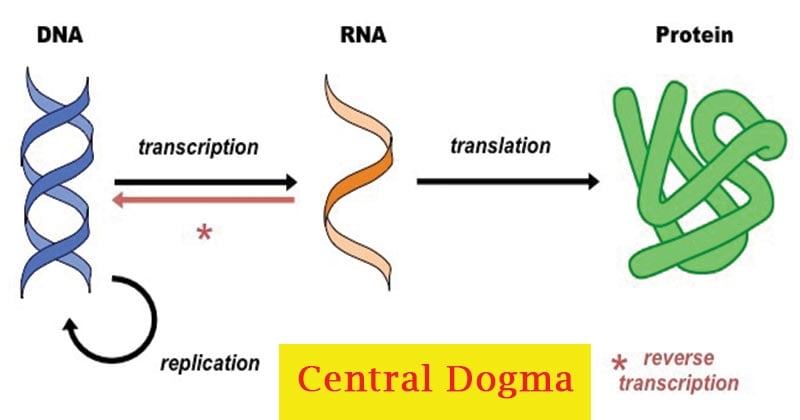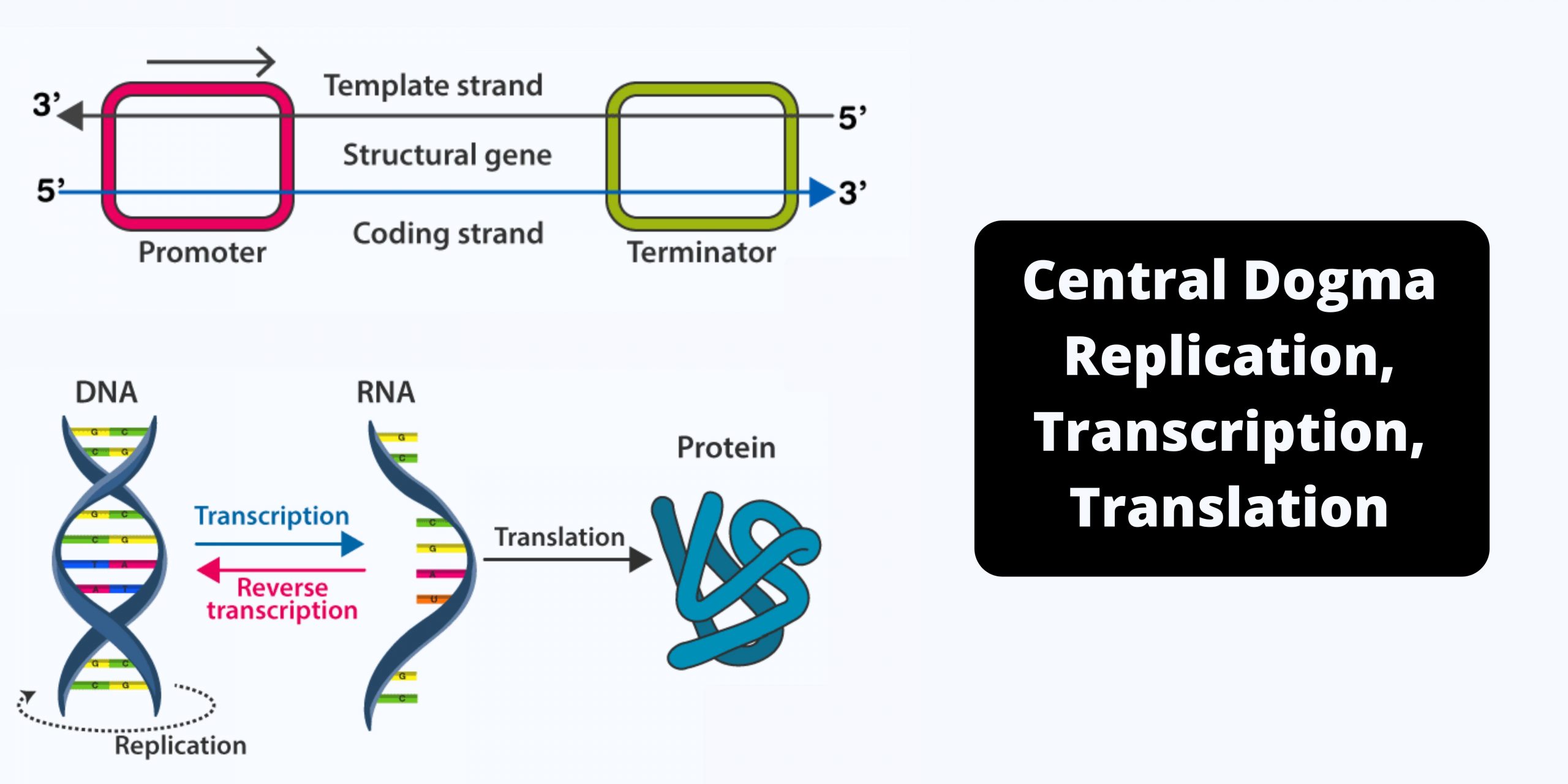The Central Dogma Describes Which of the Following
Thus the central dogma of molecular biology describes how biological information in a cell passes from DNA to RNA to proteins. The central dogma describes which of the following.

Central Dogma Replication Transcription Translation
Different patterns of gene expression allows same nucleus to become specialized in structure and function.

. The answer is D. Another way of putting it is that the central dogma follows the flow of information from _____. DNA and RNA hold the code to create proteins that are the key to gene expression.
Which of the following correctly describes the central dogma of. No answers are. Matrenka 14 1 year ago.
RNA to ribosomes D. It states that DNA is transcribed into RNA which is then translated into protein. The central dogma describes how the genes in the nucleus work to produce an organisms phenotype.
Biological information in a cell passes from RNA to DNA to proteins. Another way of putting it is that the central dogma follows the flow of information from _____. During transcription DNA is transcribed into RNA which now serves as a template for the synthesis of proteins.
The central dogma of Biology explains why water is able to diffuse across lipid bi-layers. Protein to DNA B. 1 point Gene expression relies on environmental factors that determine which traits are dominant.
The central dogma of Biology is the basis for the formation of plasma membranes. The central dogma process explains the transformation of the genetic information called DNA replication RNA encoding by transcription and encoding for protein through translation. The type of chemical bonds that hold together the two strands of a DNA double helix are called ________ bonds.
An mRNA strand is created using the DNA strand as a template. The central dogma describes information flow in cells as _____ to _______ to ______. Protein to RNA C.
Answered expert verified. Which of the following correctly describes the central dogma of biology a DNA to from BIOL 101 at University of South Carolina. The Central Dogma describes the flow of genetic information as.
Ribosomes cannot directly process DNA to synthesize polypeptides. The Central Dogma is the process by which the instructions in DNA are converted into a functional product. The steps of gene expression C.
They can only translate a specific type of RNA transcript the ______ RNA. 0 0 0 0 Choose An Option That Best Describes Your Problem. The way RNA is used as a template to make DNA.
ABiological information in a cell passes from DNAto RNA to protiens BBiological information in a cell passes from RNA to protiens to DNA CBiological information in a cell passes from RNA to DNA to protiens DBiological information in a cell passes from protien to RNA to. Which One Of The Following Does Not Follow The Central Dogma Of Molecular Biology. Biological information in a cell passes from RNA to proteins to DNA.
The central dogma describes which of the following. Protein to RNA C. Central dogma is a process of molecular biology that transfers genetic information from DNA to RNA and produces a functional protein product.
It exhibits reverse central dogma or reverse transcription. DNA to protein Click card to see definition D. Which of the following statements describes the central dogma of molecular biology.
In 2-3 complete sentences describe how DNA genetic information influences phenotype physical traits. The term Central Dogma was first proposed in 1958 by Francis Crick discoverer of the structure of DNA to describe the flow of genetic information. The central dogma of Biology refers to the nutritional requirements of cells.
Protein to DNA B. It was first proposed in 1958 by Francis Crick. Up to 10 cash back The central dogma of molecular biology is the general sequence for the flow of information in coding for a protein.
This new strand of mRNA then leaves the nucleus and is used as a template for 3-pronged tRNA molecules carrying amino acids to create a chain which will eventually. The central dogma of Biology describes how proteins are synthesized by cells. Which of the following statements describes the central dogma of molecular biology.
DNA to protein Click again to see term. Biological information in a cell passes from DNA to RNA to proteins. Which of the following demonstrates the central dogma of molecular biologists.
Which of the following statements describes the central dogma of molecular biology. The way DNA is replicated D. The central dogma describes how the genes in the nucleus work to produce an organisms phenotype.
HIV belongs to the Retrovirus group. What is the central dogma explain. The correct answer is A.
The steps of gene expression. Was this answer helpful. The genetic code describes the relationship between the sequence of base pairs in a gene and the corresponding amino acid sequence that it encodes.
DNA and RNA mutate into either harmful or helpful effects on the human body. The biological information is the part of DNA. The central dogma describes the regulation of cell activities and communication between specialized gametes The flow of genetic information basic to all living things The central dogma describes gene expression.
Biological information in a cell passes from DNA to RNA to proteins. Which of the following statements describes the central dogma of molecular biology Answer Without the options I cant answer your question directly however the central dogma of molecular biology details the way that DNA is coded in the body. The process by which enzymes are modified after translation B.

Molecular Biology Review Molecular Biology Biology Review Central Dogma


No comments for "The Central Dogma Describes Which of the Following"
Post a Comment